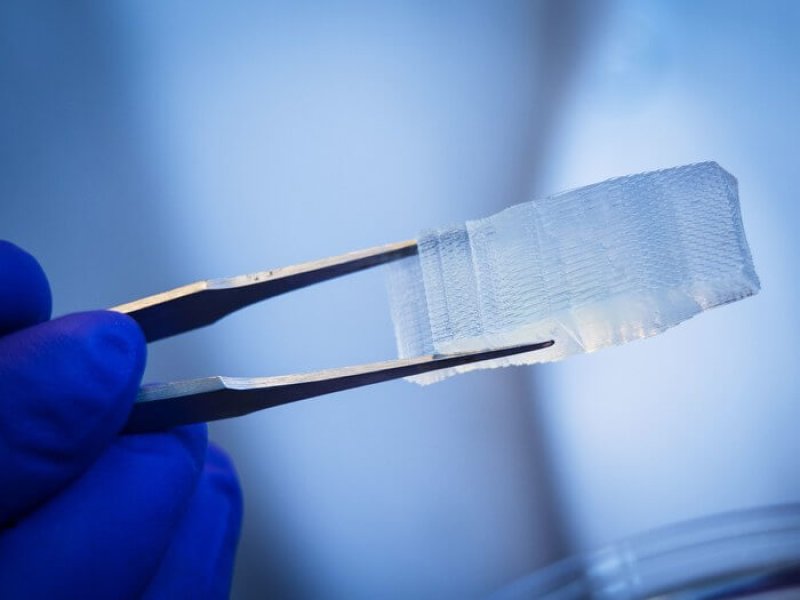The latest step toward 3D-printed replacements of failed human parts comes from a team at UC San Diego. It has bio-printed a section of spinal cord that can be custom-fit into a patient’s injury.
The scientists first printed out small implants made of softgel and filled them with neural stem cells, again using a printer. The implants were then surgically placed inside a tiny gap in a rat’s spinal cord. Over time the new nerve cells and axons grew and formed new connections across the cut spinal cord of the animal. These nerve cells connected not only with one another but with the host spinal cord tissue and the circulatory systems of the patient, which helps ensure their survival in the body.
…
Bio-printers use a computer-guided pipette to layer living cells, referred to as bio-ink, on top of one another to create artificial living tissue in a laboratory. Most bio-printers can only print down to 200 microns, but this group developed a method of producing tissue down to 1 micron, [nanoengineer Shaochen] Chen says. This higher resolution meant they were able to more accurately reconstruct the mixture of gray and white matter that makes up the spinal cord.
…
The hope is that, as a result, the implant will be able to seamlessly replace a damaged section of a person’s spine.
Read full, original post: Bio-printers are churning out living fixes to broken spines































